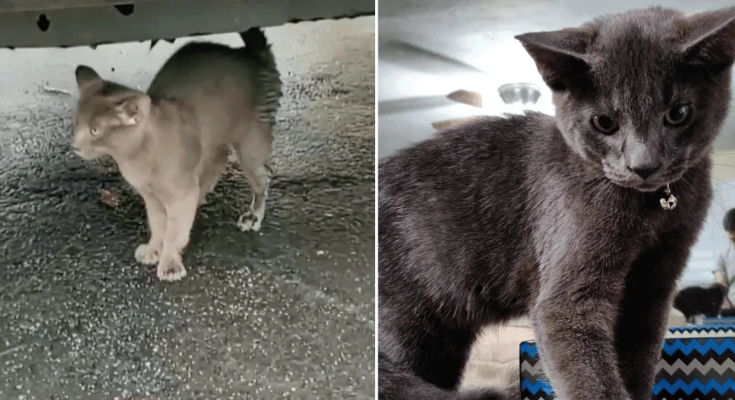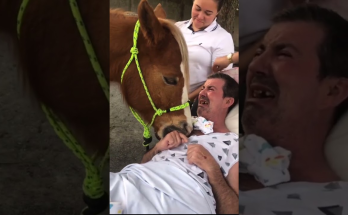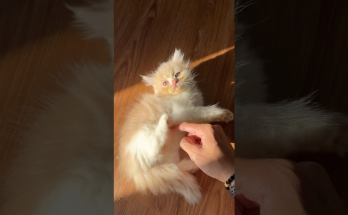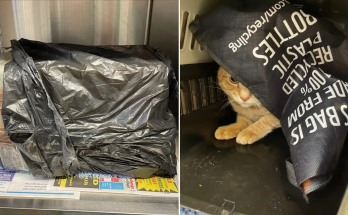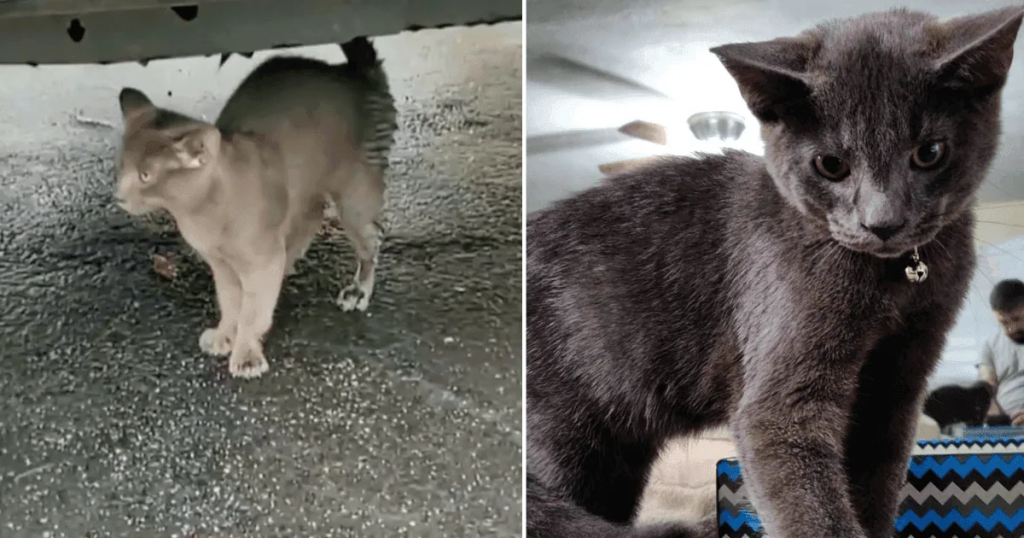
Jason Belisha was having a rough day. His car had broken down, and as he wandered around trying to figure out what to do next, something unexpected happened.
A tiny cry caught his attention. Faint but persistent, the sound led him to a little gray kitten, alone and clearly in bad shape.
The kitten looked weak, its fur dirty and its eyes filled with uncertainty.
It was as if fate had stepped in, placing this tiny creature in Jason’s path at the perfect moment.
Without hesitation, Jason picked him up, cradling the fragile kitten in his hands.
The little one clung to him instantly, as if knowing he had just found the person who could change his life.

Jason named him Popeye, and from that moment, the bond between them was undeniable.
The kitten refused to leave his side, pressing his small body against Jason as if he had finally found safety.
Wanting to do the right thing, Jason took Popeye to a local shelter, hoping someone was looking for him. But what he heard next completely shocked him.
Instead of offering to help, the shelter staff insisted that Jason take Popeye back to where he found him.
They claimed that the kitten likely had a mother nearby searching for him, and even if he didn’t, they assured Jason that he would somehow survive on his own.

Jason couldn’t believe what he was hearing. How could a tiny, sickly kitten fend for itself?
It was clear that Popeye was weak and had been alone for some time. The idea of leaving him on the streets was unthinkable.
He refused to accept their advice and walked out of the shelter, determined to give Popeye a real chance at life.
Once his car was repaired, Jason made a quick stop at a pet store, picking up supplies to ensure Popeye had everything he needed. But Popeye? He acted like he had already found home.
The moment they stepped inside Jason’s place, the kitten made himself comfortable, exploring, purring, and rubbing against his new human’s legs.

Then came the ultimate test; meeting Jason’s dog, a Corgi with a strong personality.
But any concerns about how the two would get along disappeared in an instant. Popeye wasn’t afraid. In fact, he was determined to be friends.
He followed the dog everywhere, curled up next to him, and even insisted on sleeping beside him. In no time, the two were inseparable.
Jason quickly fell in love with Popeye. The kitten was affectionate, playful, and full of life.

But deep down, he knew his busy schedule wouldn’t allow him to give Popeye the constant attention he deserved.
As much as it pained him, he made the difficult decision to find Popeye a home where he would always be cared for.
Fortunately, Jason didn’t have to look far. A friend of his stepped forward, offering Popeye a loving forever home.
It was bittersweet, but Jason knew it was the right choice. He dropped Popeye off, knowing he was leaving him in the best hands possible.

The transition was seamless. Popeye settled in quickly, charming his new family just as he had done with Jason.
But the best part? Popeye’s bond with Jason never faded. His new owner regularly sends Jason updates, videos, and photos, showing just how happy and healthy Popeye has become.
Now, Popeye is a thriving, energetic cat who still carries that same affectionate spirit. He may have grown up, but his playful personality remains.

And no matter how much time passes, he will always have a special place in Jason’s life.
Because Jason didn’t turn away that day, Popeye went from being a sickly stray to a beloved pet, living the life he always deserved.
And to think, the shelter told Jason to leave him behind. If he had listened, Popeye might not have made it at all.
One moment of kindness changed everything, proving that sometimes, the best things in life come when you least expect them.
